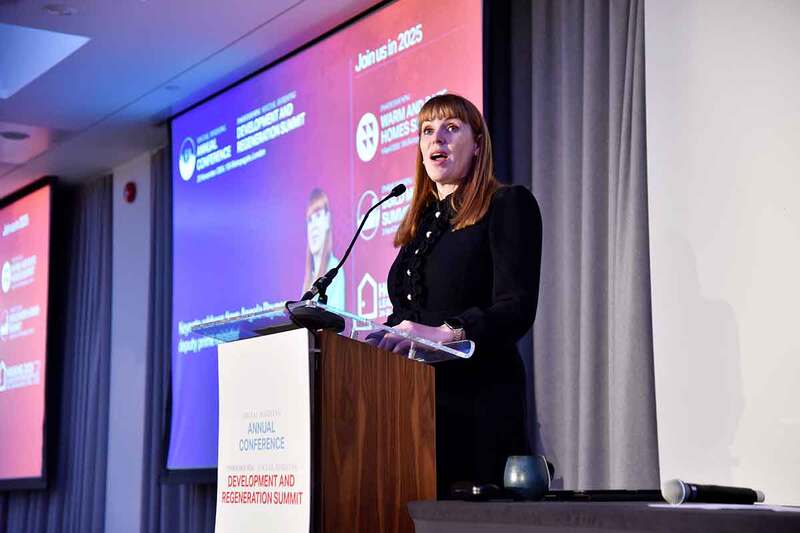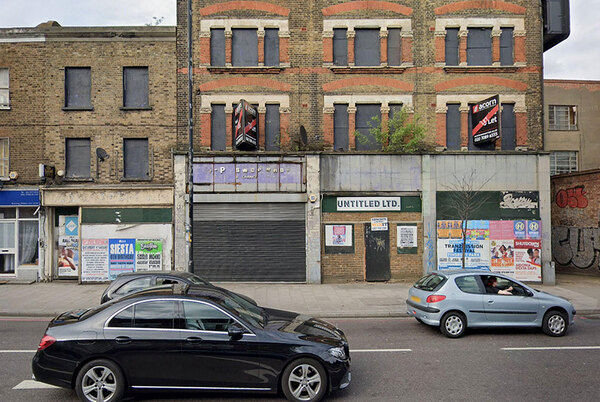You are viewing 1 of your 1 free articles
Rayner sets 2029 deadline for high-rise cladding fixes and social housing remediation strategy expected in spring 2025
Angela Rayner has set a 2029 deadline for high-rise cladding fixes and has promised a long-term social housing remediation strategy in spring 2025.
The deputy prime minister and housing secretary is set to publish a Remediation Acceleration Plan later today to “put the end in sight” for residents living in unsafe buildings.
Ms Rayner’s plan includes two target dates for making buildings safe in England, with “significantly tougher penalties” for developers that refuse to act.
First, by the end of 2029, all high-rise buildings over 18m tall with unsafe cladding in a government-funded scheme will have been remediated.
In addition, by the end of 2029, every building over 11m in height with unsafe cladding will either have been remediated or have a date for completion, or the landlords will be liable for severe penalties.
Ms Rayner’s Remediation Acceleration Plan will focus on three objectives: fixing high-risk buildings with clear deadlines and penalties; identifying all buildings with unsafe cladding; and protecting residents from the financial burdens of remediation.
The government added that it will commit to bring forward a “long-term social housing remediation strategy” in spring 2025.
Before then, ministers will “begin to accelerate” remediation of social housing by making sure that social landlords eligible for government funding apply, and by increasing “targeted support” for eligible social landlords that apply, so that work can start sooner.
Under current rules, social landlords are only eligible for building safety funds if costs would otherwise be passed on to leaseholders or they threaten the landlord’s financial viability.
Officials said Ms Rayner’s plan would be backed by “investment in enforcement”, so that councils, fire and rescue authorities and the Building Safety Regulator (BSR) have the capacity to tackle “hundreds of cases per year”.
In October, the BSR told Inside Housing it had experienced an “unexpected increase” in applications. This led to delays in processing, after figures showed it had signed off just 14% of developers’ remediation plans in the past year.
Alongside the Remediation Acceleration Plan, the government will publish a joint action plan with developers to speed up their work to fix buildings for which they are responsible.
At least 29 developers, covering over 95% of the buildings which developers are remediating themselves, have committed to “more than doubling” the rate at which they have been assessing and starting to fix unsafe buildings, meaning work on all their buildings will start by summer 2027.
To date, 95% of buildings with the same type of flammable cladding used on Grenfell Tower have been remediated. However, only 30% of identified buildings in England have been remediated, with potentially thousands more yet to be identified.
Ms Rayner said: “More than seven years on from the Grenfell tragedy, thousands of people have been left living in homes across this country with dangerous cladding.
“The pace of remediation has been far too slow for far too long. We are taking decisive action to right this wrong and make homes safe.
“Our Remediation Acceleration Plan will ensure those responsible for making buildings safe deliver the change residents need and deserve.”
Alex Norris, the building safety minister, said the plan “underscores our unwavering commitment to safeguarding residents and holding those responsible to account. We will not hesitate to actively pursue the owners of buildings who refuse to act.”
The government has committed to an update on its response to the Grenfell Tower Inquiry Phase 2 report by March 2025. In response to a parliamentary debate on the findings of the final report, the government said it would introduce a continuous review process for statutory guidance to building regulations, covering fire safety and building design by the BSR.
Additionally, the way in which building regulations guidance is produced, updated and communicated to the construction industry will also be reviewed, emphasising the need for “clarity and accountability” in ensuring building safety.
The campaign group End Our Cladding Scandal called Ms Rayner’s plan “extremely disappointing”.
A spokesperson said: “These proposals will only make a horribly complicated process worse, with further layers of bureaucracy.”
They pointed out that the BSR had already said remediation of dangerous cladding on high-rise buildings will be completed or underway by April 2026.
“We need Labour to keep its promises and introduce a building works agency. The mechanism and law for this are broadly in place and new legal powers must be introduced where required,” they added.
Heather Kidd, chair of the Local Government Association’s safer and stronger communities board, said: “Councils are committed to keeping tenants and residents safe, and are keen to work with government to drive the pace of remediation.
“However, for local government to carry out enforcement and addressing cladding issues as effectively and quickly as possible, multi-year funding arrangements are needed.
“Councils are keen to remediate the buildings they own that have dangerous cladding, but they need access to the necessary funding to do so on the same basis they had to remediate ACM [aluminium composite material] cladding.”
Sign up for our fire safety newsletter
Already have an account? Click here to manage your newsletters












